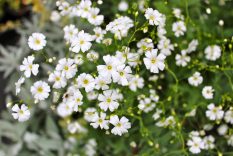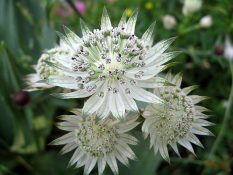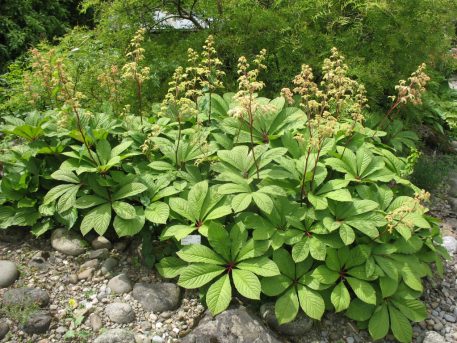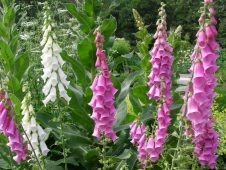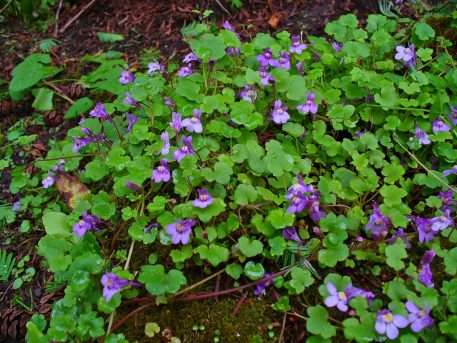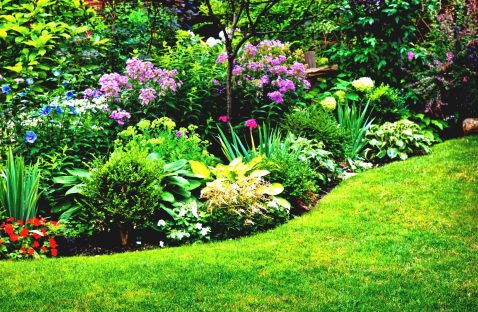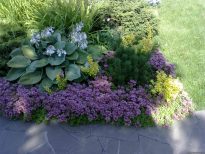The dream of any grower is perennials for giving, blooming all summer. The flower garden is always decorative and no fuss with flower seedlings, except for the first year of cultivation. In fact, there are many such perennials, and therefore, each grower can choose plants in accordance with the design and conditions of his site.
Material Content:
Perennials for summer cottages, blooming all summer, for sunny places
Oddly enough, but the flowers that can withstand direct sunlight throughout the day, less than well growing in partial shade. But if you try, there are many fans of direct sunlight, blooming all summer.
Tall

- Among the giants, eremurus can be distinguished first of all. This plant is able to become the soloist and center of any flower bed. Starting in mid-June, huge arrow-shaped peduncles appear, gradually revealing medium-sized flowers of yellow and orange hues. The flower does not like stagnation of water, for winter planting needs to be mulched.
- A popular and unpretentious plant is mallow or stem rose. Most often it is grown in a two-year culture, but most species are perennial. With good care, they delight the grower with large flowers - simple and terry of various colors and shades - for more than one year. Most often, mallow is used as a supporting plant, it is able to decorate unsightly buildings and hedges. The flower is undemanding to growing conditions, but does not like excessive moisture. Can grow on poor soils.
- Park roses can also boast of their height. Most varieties grow to 2 m or more. The variety of shapes and colors of inflorescences with a queen of flowers is difficult to argue with other plants.Most of them have a pleasant aroma, sometimes very strong. The only inconvenience is that you have to cover roses for the winter. But among a wide variety of varieties you can find frost-resistant ones that do not need shelter, for example, roses of Canadian selection. Most park roses are re-blooming and flowers appear until the frost. Caring for roses will not be too much trouble. In addition to the usual watering and top dressing, only preventive treatments for diseases will be required.
- There are giants among the bells. Pyramidal bell with high peduncles consisting of medium-sized white and blue bell-shaped flowers blooming almost all summer is especially good. The bell of milk-flowering does not lag behind him. At the time of its full development (for 3-4 years), some species of this plant reach a height of 170 cm. The number of blue, white or pink flowers on the plant is simply amazing, and the delicate aroma is fascinating. A well-developed bush of a milky-flowered bell in size can argue with a bush of currant. Such a giant should be a tapeworm; it is best developed during an individual landing without neighbors. To bloom longer, faded flowers are removed. After a few years, the bushes need to be spudded to cover the roots protruding from the ground.
- Delphiniums. These majestic flowers amaze with a variety of colors and the length of peduncles. With a plant height of 2 m, half the stalk is accounted for. Most species bloom for no more than a month, in the very middle of summer. But there are exceptions that delight flowering almost all the summer months.
Medium
This group of flowers is more numerous. Among them, the florist can find inhabitants for any flower garden.
The most decorative are roses. Hybrid tea, ground cover and floribunda rarely grow above 1 m.
You can combine them with many plants and even conifers.
But the most interesting will be flower beds from roses alone. You can choose a contrasting color of flowers from different varieties or create a flower bed of roses of different shades of the same color - the scope for the fantasy of a flower grower is simply unlimited.
For those who do not want to harbor the queen of flowers every fall, you can pick up less capricious plants that are highly decorative.
- Agastache. Blue and white spike-shaped inflorescences of this plant appear in early July and delight with their flowering until the end of August. Its height is about 60 cm. Agastakh loves the sun and moist soil, but without stagnation of water.
- At the same time, Ankhuza Kapskaya blooms abundantly in medium-sized blue, white, and pink flowers. The plant looks better when planting several copies. Loves the sun and clay soil with lime
- Gypsophila. He is also a lover of calcareous soils, but they must be dry. Perennial species are very decorative, have spherical bushes about half a meter high, entirely covered with small pink or white flowers, simple or double. The plant is unpretentious.
- Astilba. Most species blooms for about a month at the peak of summer, but the Daurian astilbe begins to bloom in June and ends in late August. Its height is about 1 m. The panicle color is pink and cherry.
- Astrantia. The variety Pink Symphony is notable for its enviable height - about 1 m and long flowering of large flowers, a bit like chamomiles.
- Yarrow or Achilles. The plant is as unpretentious as long flowering. Modern varieties have a wide color palette, there are terry forms. The height of the plant is about 80 cm.
- Asters are perennial. There are a large number of varieties blooming at different times. If you pick and plant them correctly, you can create a conveyor of plants blooming throughout the summer.
- Phlox paniculata. This plant is characterized by long flowering. There are varieties that begin to bloom from the end of June, others delight with flowering right up to frosts. The color palette includes almost all colors and shades.
- Verbascum. Has beautiful scepter-like inflorescences up to 1 m high with flowers up to 4 cm in diameter.Variety Waterfall blooms all summer.
- Veronica spiky and long-leafed will decorate any flower bed. Elegant slender plants have apical brushes of blue and pink. Their height is 70 cm.
Read also:perennials wintering in open ground
Undersized
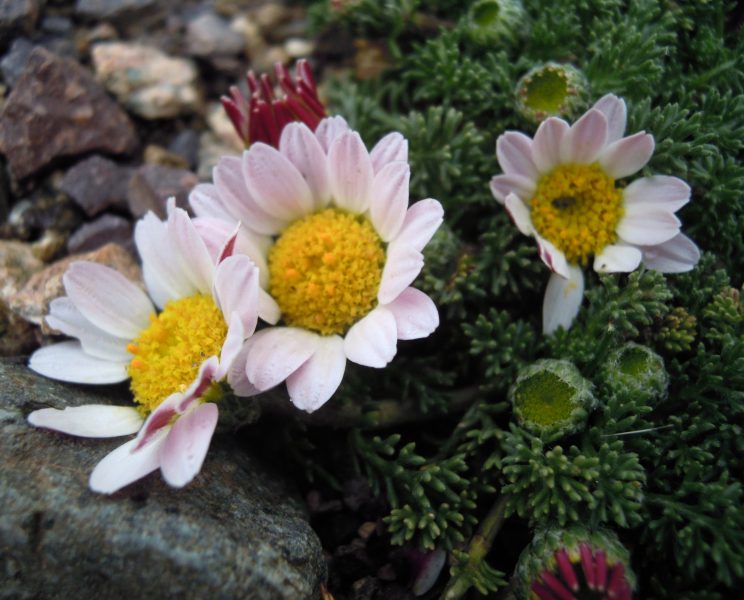
They are also many. The following can be distinguished:
- Insects please with their blue flowers for almost two months, the plant is unpretentious and easy to care for, loves light soils in terms of mechanical composition;
- Anacyclus grows no higher than 25 cm, has snow-white daisy flowers with a yellow center and pink buds;
- The ulcer up to 25 cm high with flowers of the original form of red or red-orange, unpretentious;
- Lady Verbena variety pleases the dream with its red and violet flowers from early June to the very frosts, it requires shelter for the winter;
- Arabis - a form with white fragrant small flowers blooms for 2 months, and arabis ciliated with burgundy and pink flowers - all summer months, plant height - 15 cm;
- Viola Williams begins its flowering in early spring and finishes with frost, the color palette is rich, the height of the plant is 20 cm;
- Delosperm blooms with beautiful flowers, similar to daisies of purple and pink, all summer;
- Bell Carpathian pleases with white, blue and blue flowers throughout the summer months.
Shade-loving plants
There are not so many flowers growing in full shade.
In most of them, flowering can not be called very decorative. Their main decoration is leaves.
They also can not boast of long flowering. Hosts grow best in the shade, where their decorative leaves have the most saturated color. Ferns are also good there, but they do not bloom at all. Of the flowering shade-loving plants can be called Rogersonthias and digitalis.
Penumbra Plants
Here many plants are able to develop well and bloom for a long time. From large, buzulniks can be distinguished. Their huge leaves and tall peduncles with yellow flowers are quite decorative. And the flowering period is rather big - about 2 months.
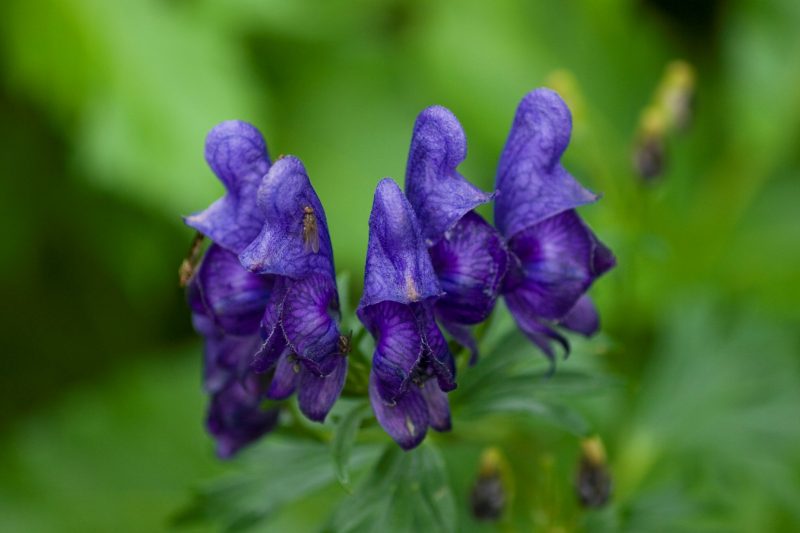
- Digitalis from very small dwarf to giants of 1.5 m and above feel not bad in partial shade. Flowers - drooping bells - they are painted in a variety of shades.
- Penumbra is able to tolerate aconite. This plant blooms already in the year of sowing and blooms all summer with blue flowers.
- Penumbra astilbe grow higher and bloom more luxuriantly and longer than in the sun.
- Very decorative foliage at aquilegia or catchment. Most varieties bloom in the first half of summer. The original form of flowers with spurs, simple and terry, have a variety of colors.
- Another plant with decorative foliage and an original form of flowers in the form of a broken heart - a dicenter. Large species bloom at the beginning of summer, the smaller ones - until the end of August.
- The cornflower is better and more magnificent blooms in partial shade. The color of fluffy flowers in corymbose panicles is brighter, and the foliage is more decorative. Plant height - up to 1.2 m.
- He loves moist places and penumbra dotted loosestrife with elegant yellow star-shaped flowers in spike-shaped inflorescences. Its height is up to 90 cm, blooms in June and July.
- Penumbra is a true paradise for viola korneta and horned. Their variegated, sometimes bicolor, inflorescences abundantly cover low bushes from spring to the very frosts.
Ground cover perennials
Most often, these are plants for an alpine hill or rockery. Growing gradually, they cover the ground with a continuous rug. Usually they do not differ in great height, because the main direction of their growth is in width.
The most interesting long-flowering groundcover:
- Roses-drift, recently bred and having so far a few varieties. They grow in height no higher than 30 cm, but the area an adult plant masters up to 1 square. m. Just an amazing sight - a carpet of blooming roses!
- Baptism - blooms with small pink flowers that have an aroma, almost all summer. It grows rapidly, occupying a large area. Plant height no more than 40 cm.
- Fuopsis is a small, no higher than 20 cm, plant with vigorous growth, quickly covers the area allotted to it, blooms with small fragrant pink flowers collected in apical inflorescence, all summer.
- Tsymbalyaria - just a baby - no higher than 10 cm. Blossoms in single pink flowers, similar to snapdragon, from June to September. Leaves are ivy.
- Creeping thyme is a spice-flavored and groundcover plant blooming with lilac or pink flowers. He loves the sun and dry sandy soil.
- Clove-grass is distinguished by a large number of fragrant flowers of various colors, blooms all summer.
- Vyazel. Sometimes it is called hare clover. Indeed, his flowers are very reminiscent of clover inflorescences, but the behavior is strikingly different. The plant quickly grows shoots up to 1 m long, displacing all neighbors. Indispensable for knitting reinforcements on sandy slopes and for planting near rocky walls.
In the shade, a periwinkle with blue flowers develops well, there is a pink-flowered form, and a European hoof with beautiful decorative leaves in the shape of a hoof.
Bulbous and Rhizome Flowers
Bulb blooms cannot boast of prolonged flowering.

Tulips and daffodils, by the majority, are already completing flowering. But they extend its lilies. Different species differ in flowering time, so the conveyor of blooming lilies can last from the beginning to the end of summer. Good in bloom and gladiolus. That's where a huge number of varieties and colors. It is a pity that the life of one flower arrow of gladiolus is short enough.
- Of the rhizome flowers, daylilies are the most long-flowering. Some varieties begin to bloom in early summer and end at its end. Each flower lives only one day, but new ones bloom to replace it. Daylily flowers can be simple and double, of various colors, sometimes from a combination of two or more colors. Perennial is quite unpretentious and, with proper care, very decorative.
- Dahlias are real kings in the flower garden. This plant has no less varieties than gladioli, but what a variety! From babies not more than 50 cm high to giants 1.5 m tall. They differ in the shape and size of inflorescences, and the variety of flowers and their shades is simply amazing. This plant is thermophilic and requires early germination in the room for early flowering. But it pleases with flowers to the very frosts.
Flowerbed of perennials in a summer cottage
Even a beginner florist can successfully create a beautiful flower bed from flowering perennials.
How to do it?
- We determine the shape of the flowerbed and draw its exact plan.
- We select flowering plants and mark them on the plan in accordance with the required nutritional area.
- We prepare the soil and plant the plants.
What patterns should be observed?
- Plants of the background should be the highest, each next tier below the previous one with the orientation of the flower bed from north to south.
- Plants should not obscure each other.
- The needs for lighting, nutrition, moisture and the mechanical composition of the soil, its acidity in the flowers should be approximately the same.
- It is necessary to avoid variegation in design. It is better to choose one primary color and several contrasting ones or vice versa, similar in tone.
Option flowerbed elongated.
- Background - mallow pink or crimson. If the flowerbed is near the fence, climbing plants can be planted in the background.
- The average plan is white phlox, yarrow Cherry Queen, lilac phlox, daylilies with cherry blossoms.
- A border of white and pink carnations of grass.
Round flowerbed.
- The center is a dahlia with red or orange flowers about 80 cm high.
- Two or three rows of large-flowered flax blue.
- Astra Alpine White Alps.
- A bell border of a crowded Gnome and anacyclus. Plant, alternating plants.
Both flower beds are composed of plants that grow well in the sun and partial shade.
The most unpretentious flowers for a summer residence
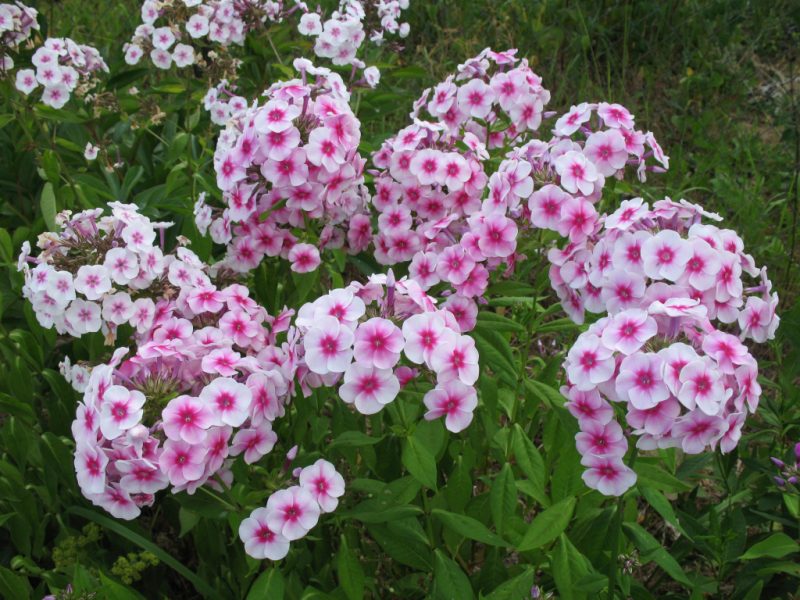
The colors of perennials that one could plant and forget about them do not exist in nature.Each plant will need weeding, watering and top dressing at least occasionally. Forgiveness errors in the care of yarrow, Veronica, cuff, phlox, survivor, gypsophila and some other flowers. But with proper care, they will grow and bloom much better.



